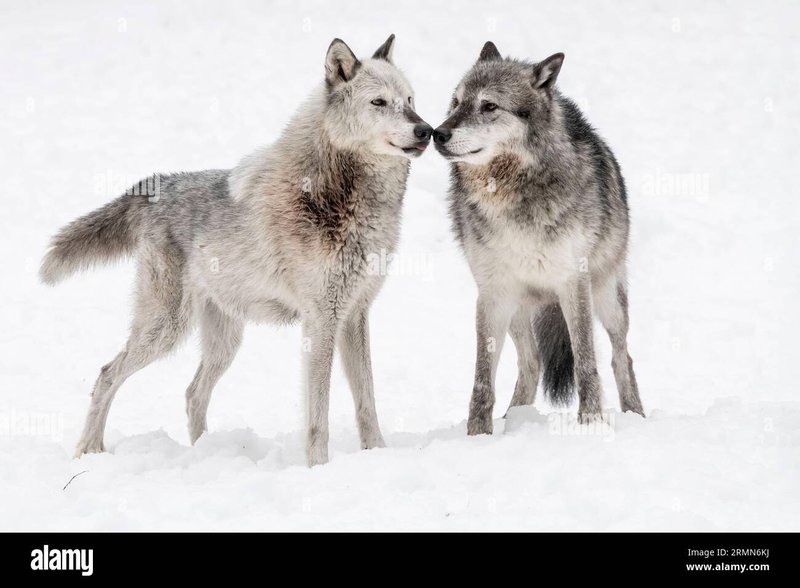
Picture this: a beautiful wolf strutting through a forest, its coat gleaming in the dappled sunlight. But lurking beneath that stunning exterior could be a horde of wolf worms, turning that gleaming coat into a source of irritation. Wolf worms, or *Cuterebra*, are larvae that can invade mammals, causing discomfort and sometimes severe health issues. As a result, animals have developed specific grooming behaviors to combat these unwelcome guests. In this article, we’ll explore how different species react to these parasites through grooming and what it means for their survival.
What Are Wolf Worms?
To understand how animals respond to wolf worms, it’s essential to know what they are. Wolf worms are the larvae of the *Cuterebra* fly. These flies lay their eggs near host animals, primarily mammals like rabbits, rodents, and even canines. Once the eggs hatch, the tiny larvae attach themselves to the animal’s fur. They eventually burrow into the skin, creating a cyst. This can lead to infections and other serious health issues if not addressed.
Wolf worms are most commonly found in North America, particularly in warm, humid environments. You might think that such a tiny creature wouldn’t cause much trouble, but these larvae can create significant problems for their host. The irritation from the larvae can lead to intense itching and discomfort, pushing animals to groom excessively.
Understanding this parasitic relationship helps us appreciate the complexities of animal behavior. Grooming isn’t just about cleanliness; it’s also a crucial survival tactic.
The Importance of Grooming in Wild Animals
Grooming is more than just a beauty routine for wild animals. It serves several critical functions. First, it helps remove dirt, parasites, and loose fur, keeping their coats healthy and functional. Without proper grooming, animals may become susceptible to infections and other health issues.
Additionally, grooming can play a social role among animals. Many species engage in mutual grooming—a behavior where two individuals clean each other. This not only helps with hygiene but also strengthens social bonds within groups. For example, you might see primates or elephants grooming each other as a way to foster relationships and trust.
Moreover, when animals groom in response to wolf worms, it can be seen as a survival mechanism. The more they groom, the better their chances of eliminating these parasites before they cause serious harm. It’s a fascinating interplay between health and social behavior.
Grooming Behaviors in Different Species
Different species exhibit unique grooming behaviors when faced with wolf worms. For instance, wolves, being social animals, may engage in mutual grooming. They often rely on pack members to help them reach areas that are hard to clean themselves. If a wolf is infested with larvae, you might notice its packmates helping out. This can significantly reduce the risk of infection and further complications.
On the other hand, solitary animals like foxes or deer may groom themselves more rigorously. They’ll use their legs or teeth to scratch and nibble at the affected area. This behavior can lead to bald patches and irritation, but it’s a necessary risk to maintain their health.
Interestingly, some animals have adapted to deal with wolf worms in more creative ways. For example, certain birds, such as crows, are known to engage in “anting”—a behavior where they use ants to help rid themselves of parasites. While not specifically aimed at wolf worms, it shows the lengths animals will go to ensure their grooming is effective.
The Impact of Wolf Worms on Grooming Frequency
You might be surprised to learn that the presence of wolf worms can significantly increase how often animals groom themselves. For many species, the irritation caused by the larvae is so bothersome that they spend an inordinate amount of their waking hours trying to relieve the discomfort.
Imagine a deer in the wild, constantly scratching at its legs, trying to find relief from the itching. This behavior depletes energy that could be used for foraging or escaping predators. Consequently, animals with a high worm load may appear thinner or weaker over time, as their focus shifts from critical survival behaviors to managing discomfort.
This increased grooming frequency highlights the broader implications of parasite infestations on wildlife populations. Healthy grooming habits are essential for the well-being of these animals, and when disrupted, they can lead to severe consequences.
Strategies Animals Use for Effective Grooming
To combat the discomfort caused by wolf worms, animals have developed various grooming strategies. Let’s take a closer look at a few of them:
- **Physical Grooming:** This is the most common method, where animals use their paws or tongues to groom themselves. For instance, many mammals will use their teeth to nibble at fur or skin to remove larvae.
- **Social Grooming:** As mentioned earlier, many species will help each other out. Wolves and elephants often rely on their social groups to keep each other clean, especially in hard-to-reach areas.
- **Environmental Grooming:** Some animals will use their surroundings to help with grooming. You may see them rubbing against trees or rocks to scratch at irritated spots.
Each of these methods showcases the adaptability of wild animals. They use the resources available to them, whether it’s their own bodies, their friends, or the environment around them, to fight off parasites.
Grooming is an essential behavior for wild animals, especially when it comes to dealing with the challenges posed by wolf worms. Beyond just looking clean and polished, grooming acts as a survival tool, allowing animals to maintain their health and social bonds. Each species has developed unique strategies to cope with irritation, from rigorous self-grooming to seeking support from friends.
So next time you see a wild animal, remember that there’s more happening beneath the surface. Their grooming behaviors are a testament to their resilience and adaptability in the face of parasitic threats like wolf worms. By understanding this dynamic, we gain insight into the fascinating world of animal behavior and the important role of grooming in wildlife health.

